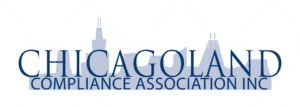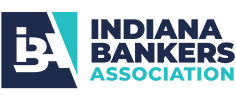On April 16, 2020, The Consumer Financial Protection Bureau issued a final rule raising the loan-volume coverage thresholds in Regulation C for financial institutions reporting data under the Home Mortgage Reporting Act (HMDA). A permanent threshold for collecting closed end mortgage reporting data went from 25 to 100 loans effective July 1, 2020. Also, open-end lines of credit reporting will increase from 100 to 200 effective January 1, 2022 after the current temporary threshold of 500 of open-end lines of credit expires.
The HMDA data helps determine whether financial institutions are serving the housing needs of their communities and assists in identifying possible discriminatory lending patterns and used to enforce antidiscrimination statutes.
With these changes, many smaller financial institutions may no longer be HMDA reporters and may believe that they no longer need to worry about fair lending. To the contrary, all banks still need to ensure a fair lending program is maintained and identifies fair lending risks from any patterns of disparity. In addition, Regulation B requires the collection of government monitoring information (GMI) on applications for credit primarily for the purchase or refinancing of a dwelling occupied or to be occupied by the applicant as a principal residence, where the extension of credit will be secured by the dwelling. The regulation requires the collection of:
- Ethnicity and race using either:
- For ethnicity, the aggregate categories Hispanic or Latino and not Hispanic or Latino; and, for race, the aggregate categories American Indian or Alaska Native, Asian, Black, or African American, Native Hawaiian or Other Pacific Islander, and White; or
- The categories and subcategories for the collection of ethnicity and race set forth in AB to 12 CFR part 1003.
- Sex;
- Marital status, using the categories married, unmarried and separated; and
- Age.
To enable a bank to understand its lending patterns, banks should collect the required information above in a manner that allows them to evaluate the potential fair lending risk to the institution. If the bank utilized software for prior HMDA submissions or another collection platform, the bank could utilize these platforms to geocode the information for self-analysis. Banks should geocode all loans so it can perform an analysis of its lending in substantially minority census tracts along with lending in low- and moderate-income census tracts for CRA purposes.
An elaborate analysis need not be conducted in all instances and should be based on the size, complexity, and fair lending risk of the institution. But a basic understanding of the market penetration is needed to determine how well the bank is penetrating all census tracts within its lending area, specifically majority-minority census tracks (those tracts with a minority population of 50 percent or more). All that is necessary is to use the borrower’s characteristics collected under Regulation B to visualize the lending patterns to all types of borrowers in the Bank’s lending area. Bankers often express concern over who has access to this Self-Testing process and findings. Regulation B offers guidance on how such an analysis may be protected from discovery under the Incentives for Self-Testing and Self-Correction in the regulation.
Regulation B, 12 CFR 1002.15, defines a self-test as any program, practice or study that is designed and used specifically to determine the extent or effectiveness of a creditor’s compliance with the Equal Credit Opportunity Act when using or creating data or factual information that is not available nor derived from loan or application files or other records related to credit transactions.
The confidential privilege under this section applies to the report or results of the self-test, data or factual information created by the self-test, and any analysis, opinions, and conclusions pertaining to the self-test report or results. The privilege covers workpapers or draft documents as well as final documents. For the privilege in this section to apply, appropriate corrective action is required when the self-test shows that it is more likely than not that a violation occurred, even though no violation has been formally adjudicated.
In general, the report or results of a privileged self-test may not be obtained or used by (i) a government agency in any examination or investigation relating to compliance with the Act or this part; or (ii) a government agency or an applicant (including a prospective applicant who alleges a violation of §1002.4(b)) in any proceeding or civil action in which a violation of the Act or this part is alleged.
We do know that regulatory examinations will continue to assess a bank’s performance from a fair lending perspective. The examiners will be viewing the bank’s loan data from its core system and may utilize proxy information to conduct an analysis of its lending patterns and market penetration for fair lending purposes. As a best practice, banks will want to be proactive and conduct an analysis of their data to understand the lending patterns to be able to refute any negative information identified by examiners in their analysis. In addition, the data analysis reviewed by the bank can help identify lending gaps and enable the bank to implement an action plan to increase lending originations to a particular location or to a particular minority group.
If the bank has a written fair lending program and fair lending risk assessment, the bank will need to adjust accordingly. Best practice is for the bank to maintain its efforts to demonstrate through analysis and mitigating controls the bank’s ability to identify any form of disparity and fair lending risk. In addition, upward reporting to management and to the bank’s board of directors of the bank’s fair lending analysis is vital to ensure knowledge of the bank’s lending patterns.
Remember the old saying, “You don’t know what you don’t know” and you don’t want to know by the way of examiner analysis.
If your bank is no longer a HMDA reporter and needs guidance on how to adjust its fair lending program, fair lending risk assessment or perform an effective lending analysis, contact TCA.
Let TCA identify “A Better Way” with your Fair Lending Program.






